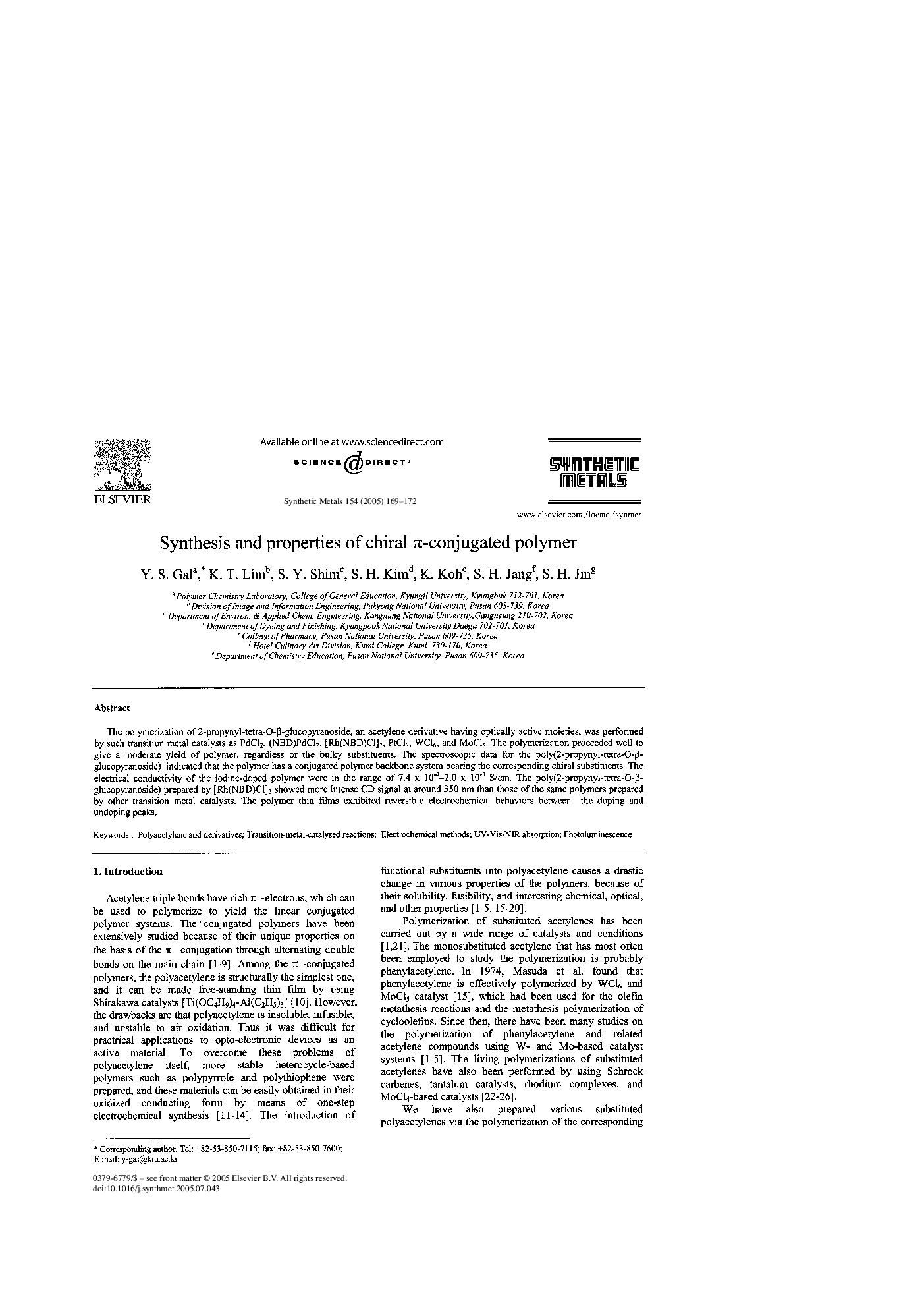| Article ID | Journal | Published Year | Pages | File Type |
|---|---|---|---|---|
| 9776241 | Synthetic Metals | 2005 | 4 Pages |
Abstract
The polymerization of 2-propynyl-tetra-O-β-glucopyranoside, an acetylene derivative having optically active moieties, was performed by such transition metal catalysts as PdCl2, (NBD)PdCl2, [Rh(NBD)Cl]2, PtCl2, WCl6, and MoCl5. The polymerization proceeded well to give a moderate yield of polymer, regardless of the bulky substituents. The spectroscopic data for the poly(2-propynyl-tetra-O-Ã-glucopyranoside) indicated that the polymer has a conjugated polymer backbone system bearing the corresponding chiral substituents. The electrical conductivity of the iodine-doped polymer were in the range of 7.4 Ã 10â4-2.0 Ã 10â3 S/cm. The poly(2-propynyl-tetra-O-Ã-glucopyranoside) prepared by [Rh(NBD)Cl]2 showed more intense CD signal at around 350 nm than those of the same polymers prepared by other transition metal catalysts. The polymer thin films exhibited reversible electrochemical behaviors between the doping and undoping peaks.
Related Topics
Physical Sciences and Engineering
Materials Science
Biomaterials
Authors
Y.S. Gal, K.T. Lim, S.Y. Shim, S.H. Kim, K. Koh, S.H. Jang, S.H. Jin,
